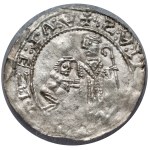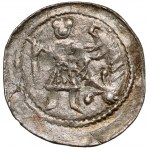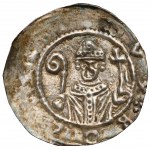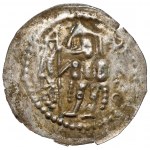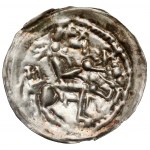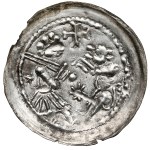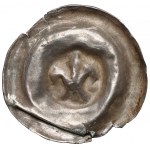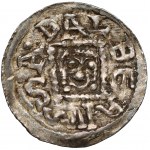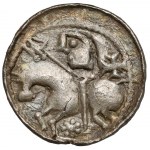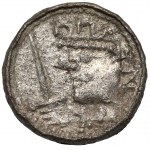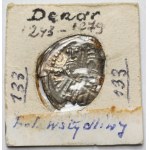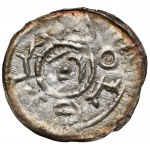A historically important, striking brakteat.
Double beaten, with a clear bending line (with a local clearance on its line). Patina. Good detail.
A coin that was once called a penance coin, seeing it as a reference to Prince Boleslaw's pilgrimage to the tomb of St. Adalbert in Gniezno in 1113. It referred to penance for the blinding and death of his older brother, Zbigniew. Only the discovery of the treasure in 1932 and its analysis by Ryszard Kiersnowski shed new light on its iconography. He linked it to the Wrymouth's manifesto after the Polish prince paid tribute in Merseburg before Emperor Lotar III. He dated the event to around 1135.The iconography was said to proclaim that the Polish prince was under the protection of St. Adalbert, hence the designation of bracelets of this type as patronage. Nowadays, including in the context of Vytautas Nakielski's research, the first interpretations are being revisited, seeing in this scene an absolution - washing away from the ruler the curse of Archbishop Martin, cast for killing his brother.
The wide disc of the brakteat was an excellent means to do this, since, while retaining the weight of the denarius, it was almost 2.5 times its diameter, allowing for a much better use of the coin as a means of manifestation.
A different light on the essence of its issue is shed by recent research by W. Garbaczewski, who sees it as the result of a monetary reform from the end of Boleslaw's reign, aimed at replenishing the treasury to pay tribute to Lotar III, and dates the type to 1137. More at marciniak.com.
Piece from the 46th WCN auction (2011), from the collection of Feliks Sciballa.
Silver, diameter 28 mm, weight 0.69 g.







